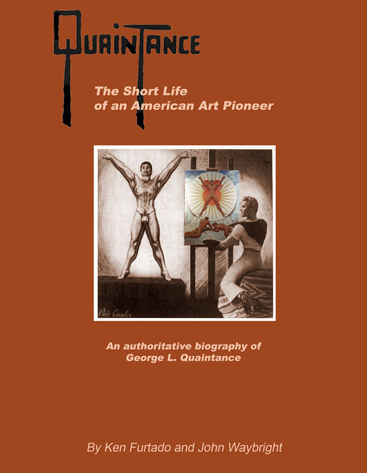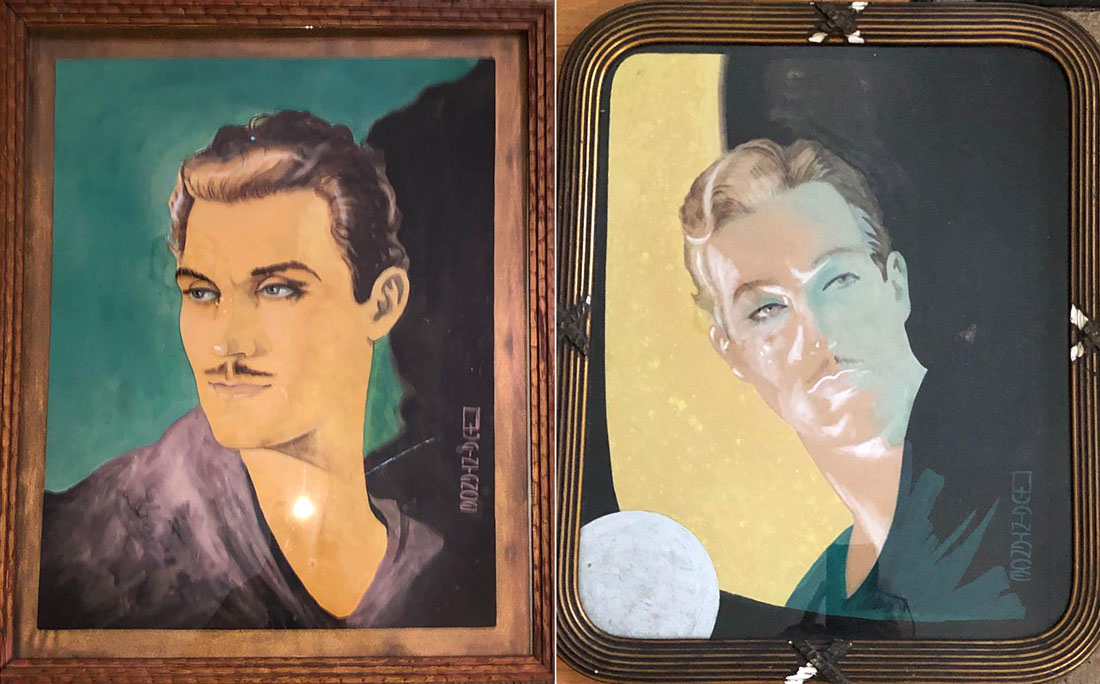- Details
- Written by: Ken Furtado
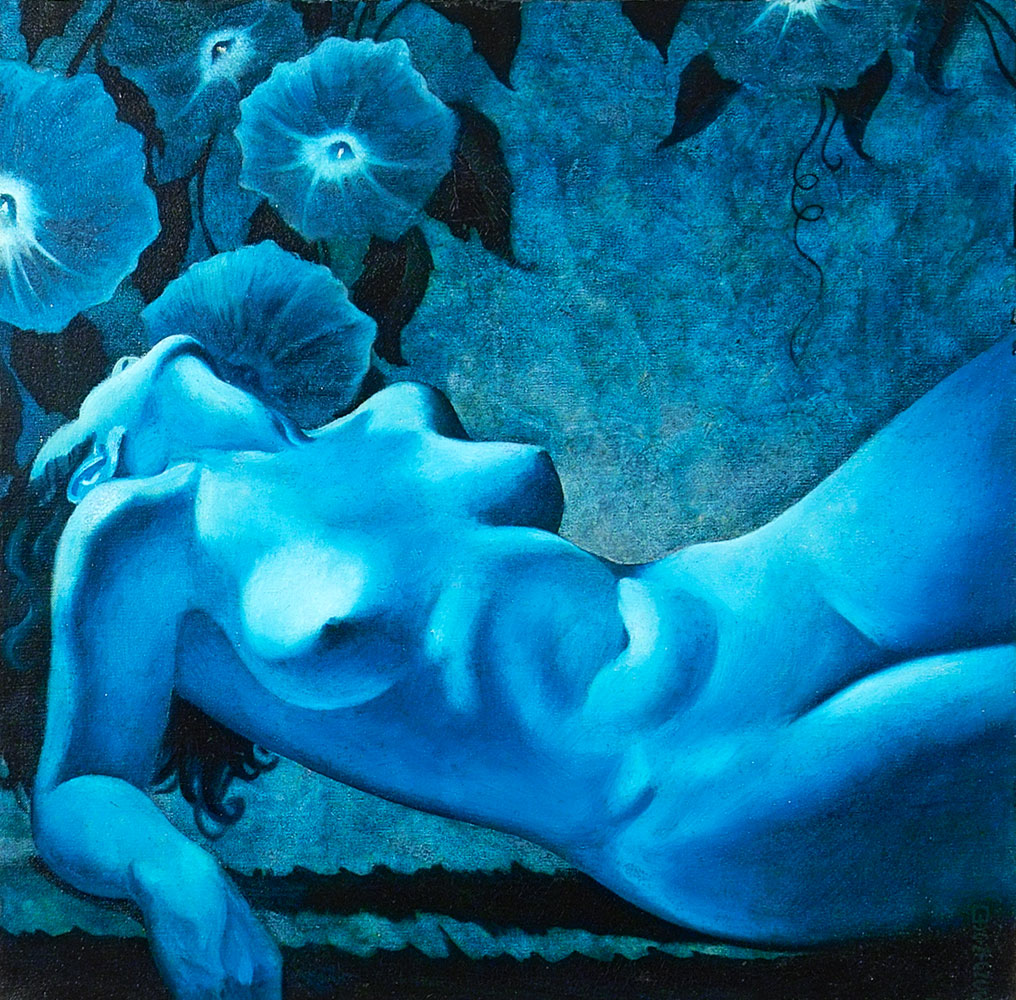 I received email notification this morning of an online auction to be conducted in August, 2022 featuring several Quaintance-related items. One of them is the original oil painting of the woman in blue pictured here and in my previous blog entry. The auction house is calling the painting Moonglow. It is described as 24x24 inches, oil on canvas, signed lower right and dated 1940. The opening bid is $4,400 plus tax, a 30% buyer's premium, and whatever it costs to ship it to the winning bidder. I will report back in a month with the actual selling price.
I received email notification this morning of an online auction to be conducted in August, 2022 featuring several Quaintance-related items. One of them is the original oil painting of the woman in blue pictured here and in my previous blog entry. The auction house is calling the painting Moonglow. It is described as 24x24 inches, oil on canvas, signed lower right and dated 1940. The opening bid is $4,400 plus tax, a 30% buyer's premium, and whatever it costs to ship it to the winning bidder. I will report back in a month with the actual selling price.
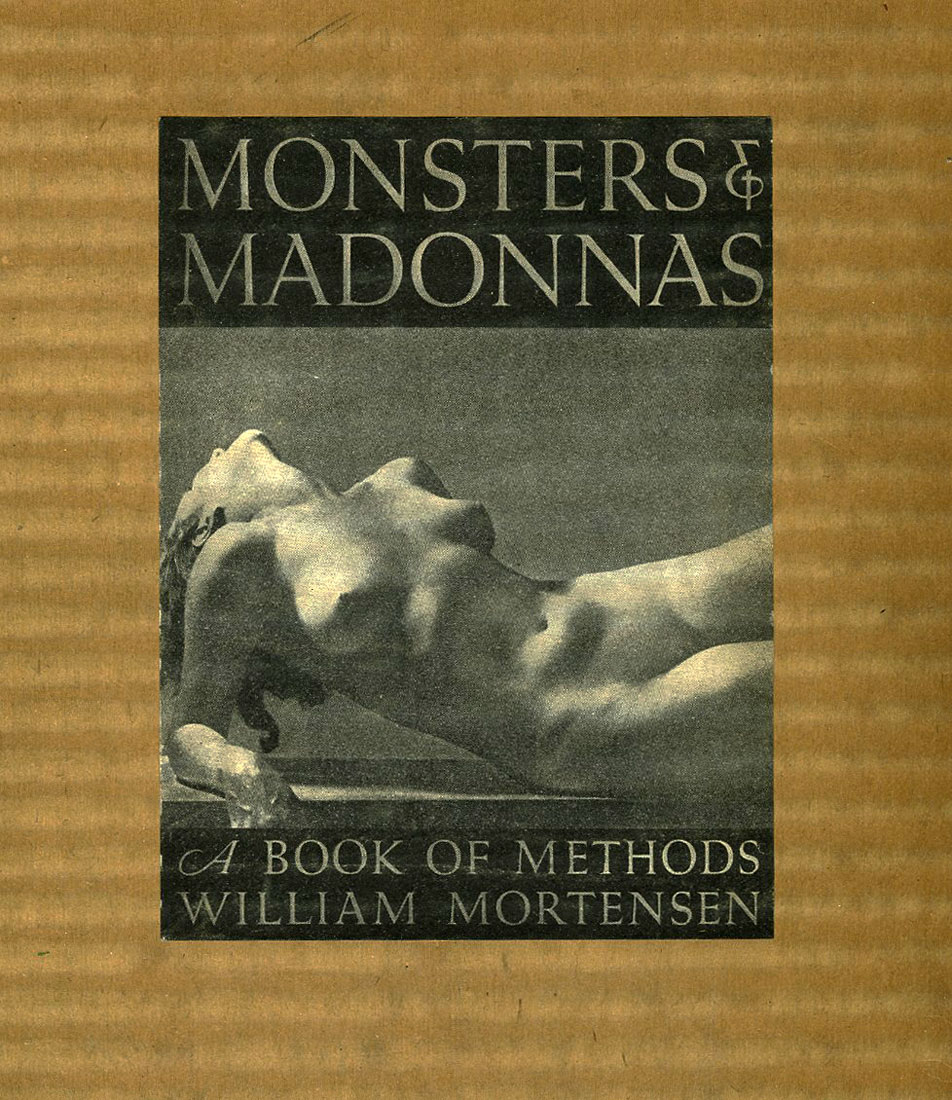 What's interesting about this image is that the model is, to all intents and purposes, plagiarized. In 1936, photographer William Mortensen published a book titled Monsters and Madonnas. Mortensen was a well-known and controversial photographer in the '30s, whose "obscurity today is mainly due to his championing of Pictorialism, a force within photography that promoted retouching, hand-worked negatives, chemical washes, and an artistic, painterly approach that soon faded with the advance of modernism." (Link)
What's interesting about this image is that the model is, to all intents and purposes, plagiarized. In 1936, photographer William Mortensen published a book titled Monsters and Madonnas. Mortensen was a well-known and controversial photographer in the '30s, whose "obscurity today is mainly due to his championing of Pictorialism, a force within photography that promoted retouching, hand-worked negatives, chemical washes, and an artistic, painterly approach that soon faded with the advance of modernism." (Link)
 Quaintance's blue female nude is an undisguised copy of the Madonna on the cover of Mortensen's book. Quaintance did little more than add the flowers!
Quaintance's blue female nude is an undisguised copy of the Madonna on the cover of Mortensen's book. Quaintance did little more than add the flowers!
- Details
- Written by: Ken Furtado
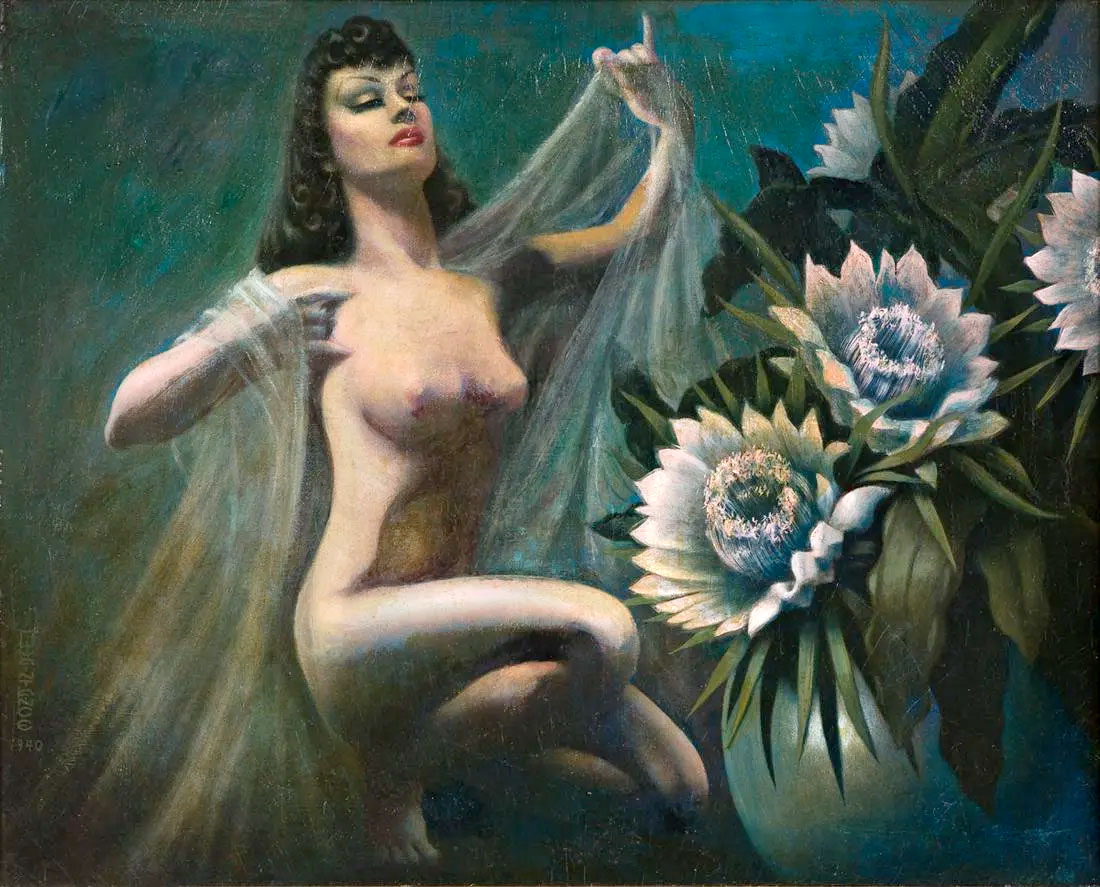 Early in his career, George Quaintance had a minor obsession with moonflowers. He included them in more than half a dozen paintings or drawings, always juxtaposed against a buxom female nude.
Early in his career, George Quaintance had a minor obsession with moonflowers. He included them in more than half a dozen paintings or drawings, always juxtaposed against a buxom female nude.
Fans and admirers of the artist may be unaware of the female nudes he painted, but he was once well-known for them. The January 1939 issue of the Chicago-based Picture and Gift Journal, contained an article claiming, "George Quaintance is the originator of the 'glamour nudes,' who have all it takes to knock 'em dead from San Diego to Bangor, from Miami to Seattle."
 And what's a moonflower, anyway?
And what's a moonflower, anyway?
As I young man, I earned spending money mowing lawns. There was a vine growing on the patio of one client that she called a moonflower. It had fragrant, pure white blossoms the size of a saucer that opened at night.
 The Internet will tell you a moonflower is a member of the Morning Glory family. Georgia O'Keeffe, who attended the same Art Students League as Quaintance (but a decade earlier) also painted them. Purists will note that not all the flowers George called moonflowers actually are moonflowers, but that would be to apply a foolish consistency.
The Internet will tell you a moonflower is a member of the Morning Glory family. Georgia O'Keeffe, who attended the same Art Students League as Quaintance (but a decade earlier) also painted them. Purists will note that not all the flowers George called moonflowers actually are moonflowers, but that would be to apply a foolish consistency.
 The House of Shaw published and sold many of Quaintance's lithographs; it offered a Moonflower described as, "Moon Flower, 24x30, an artist-signed limited edition watercolor gravure of a nude in an ecstatic posture bathed in a fantasy of moon flowers and moonlight in tones of silver and blue. $20 framed from House of Shaw Decorative Arts, 801 6th Ave., NYC."
The House of Shaw published and sold many of Quaintance's lithographs; it offered a Moonflower described as, "Moon Flower, 24x30, an artist-signed limited edition watercolor gravure of a nude in an ecstatic posture bathed in a fantasy of moon flowers and moonlight in tones of silver and blue. $20 framed from House of Shaw Decorative Arts, 801 6th Ave., NYC."
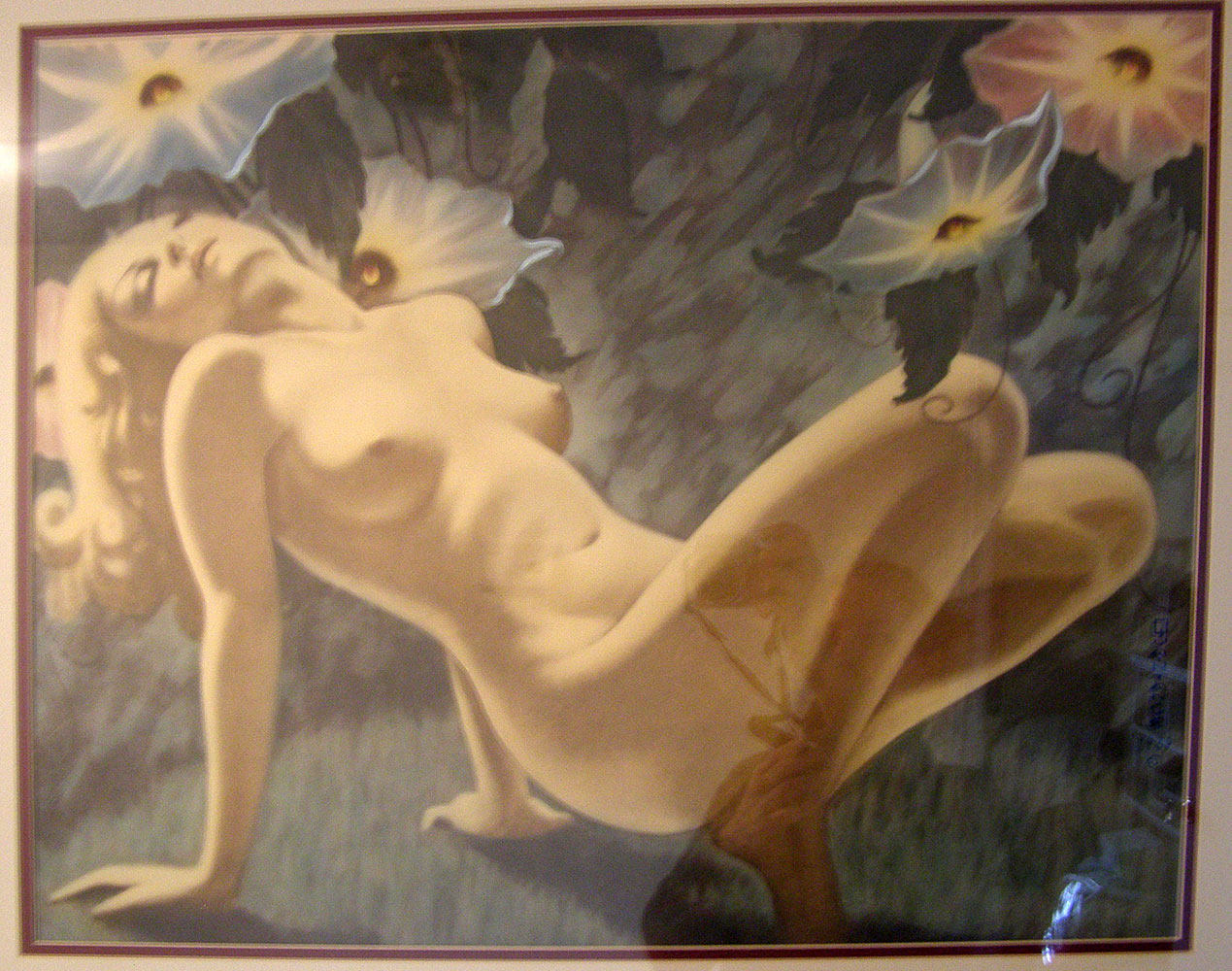 In August 2021, an online auction house offered an original Quaintance painting in the Moonflower tradition (uppermost image). The listing read, "Female Nude. Oil on canvas. 1940. 610x760 mm; 24x30 inches. Signed and dated in oil, lower left recto. Provenance: estate of Ray Blanco, New Jersey; private collection. Quaintance was one of the early American pioneers of kitschy, homoerotic, fantasy art. His illustrations for Physique Pictorial magazine in the early 1950s helped to popularize his work. He is most sought after for his macho, campy, muscular images of cowboys, gods, matadors and other overtly masculine, skimpily-clad, idealized physical specimens. But he was also an accomplished portrait painter and landscapist. Outside of his portraiture, there are few known images of women in his oeuvre."
In August 2021, an online auction house offered an original Quaintance painting in the Moonflower tradition (uppermost image). The listing read, "Female Nude. Oil on canvas. 1940. 610x760 mm; 24x30 inches. Signed and dated in oil, lower left recto. Provenance: estate of Ray Blanco, New Jersey; private collection. Quaintance was one of the early American pioneers of kitschy, homoerotic, fantasy art. His illustrations for Physique Pictorial magazine in the early 1950s helped to popularize his work. He is most sought after for his macho, campy, muscular images of cowboys, gods, matadors and other overtly masculine, skimpily-clad, idealized physical specimens. But he was also an accomplished portrait painter and landscapist. Outside of his portraiture, there are few known images of women in his oeuvre."
The opening bid was $2,200 and the lot was estimated to fetch $3,000-$5,000 — plus a 30% buyer premium. The painting sold for an eye-opening $5,800.
- Details
- Written by: Ken Furtado
 Born in Stockholm, Sweden in 1905, Greta Garbo quickly became so famous that MGM Studio billed her only as "Garbo." She may have thus been the first "mononymous" celebrity.
Born in Stockholm, Sweden in 1905, Greta Garbo quickly became so famous that MGM Studio billed her only as "Garbo." She may have thus been the first "mononymous" celebrity.
I have never found any evidence to indicate that she or George Quaintance ever crossed paths, but they were of similar ages and they were both in Hollywood at roughly the same time, so it's not out of the question.
- Details
- Written by: Ken Furtado
It is always an event when a new Quaintance painting surfaces or a lost canvas is found. It has been five years since a new, previously unknown painting emerged.
Novarro lived from 1899 to 1968. He was born in Mexico, and his family moved to California in 1913 to escape the Mexican revolution. Novarro's mother claimed to be a descendant of none other than Montezuma himself! Like Quaintance, Novarro was originally a dancer. He was working as a singing waiter when he was discovered by Hollywood. The silent screen's original Ben-Hur, Novarro quickly became cinema's new Latin Lover and hottest sex symbol after the premature death of Rudolph Valentino. Norma Shearer, Greta Garbo, Joan Crawford, Jennifer Jones, and Myrna Loy were among Novarro's illustrious costars.
- Details
- Written by: Ken Furtado
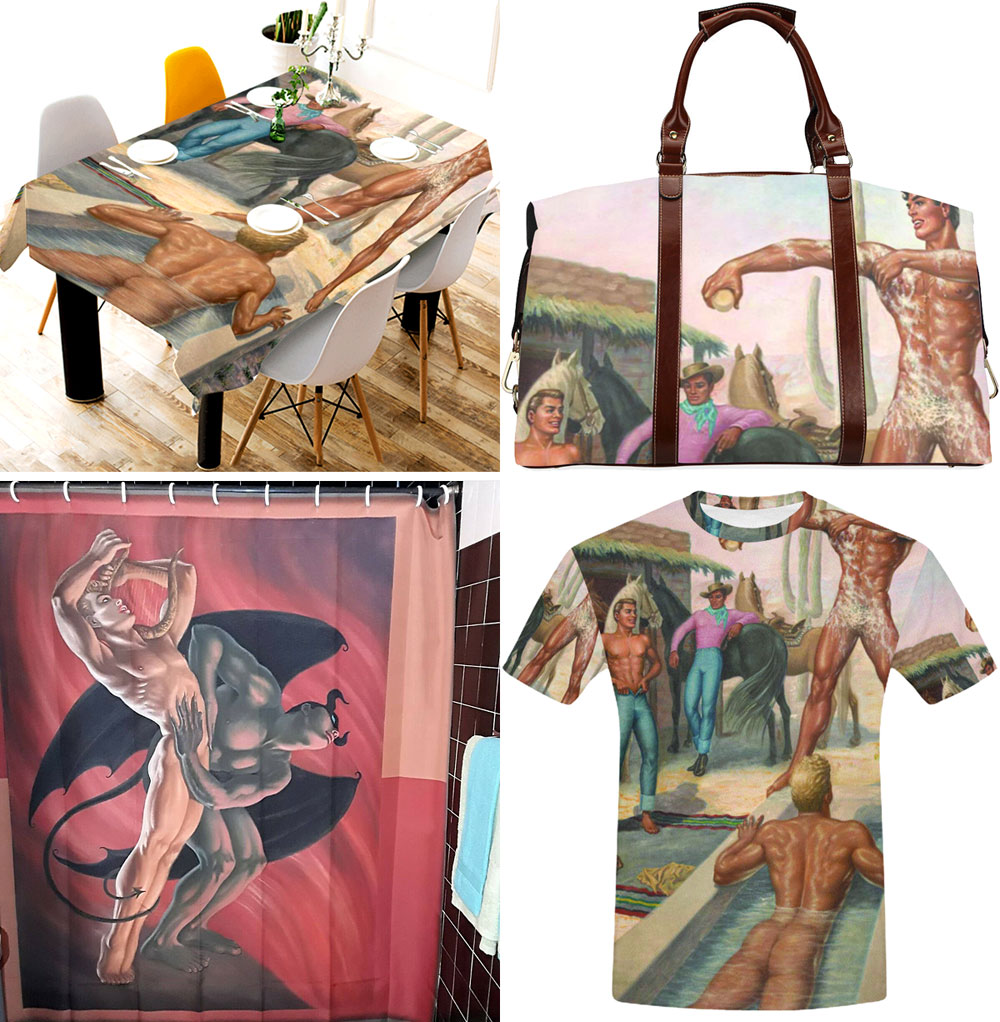 I have written about this topic before (Exploiting the Quaintance Estate) and no doubt will do so again, because I see red at every new instance of some "entrepreneur" taking financial advantage of the work of George Quaintance. The exploitation usually takes one of two forms: the appropriation of images for use in commercial products that the artist never intended, which benefit the pirate, not the estate or the artist’s reputation; and the misrepresentation of works of art as being by Quaintance when in fact they are not.
I have written about this topic before (Exploiting the Quaintance Estate) and no doubt will do so again, because I see red at every new instance of some "entrepreneur" taking financial advantage of the work of George Quaintance. The exploitation usually takes one of two forms: the appropriation of images for use in commercial products that the artist never intended, which benefit the pirate, not the estate or the artist’s reputation; and the misrepresentation of works of art as being by Quaintance when in fact they are not.
I will talk more about misrepresentation at another time. Until then, here are some examples of misappropriated images that have appeared since I first wrote about this subject: sneakers, a tablecloth, t-shirts, a purse, shower curtains, and — get this — adhesive labels that can be affixed to your water bottle, lunch box or other chosen target.
- Details
- Written by: Ken Furtado
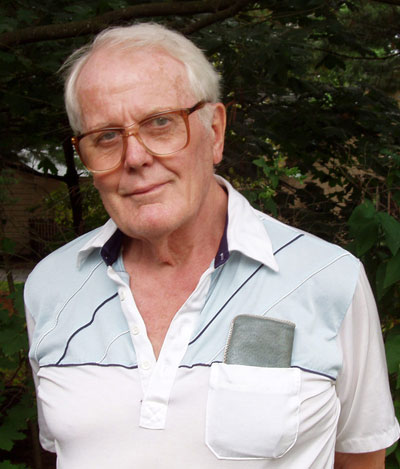 The Rev. Robert W. "Bob" Wood died Aug. 20, 2018 at his home in Concord, NH. He was 95 years old. His life warranted an obituary in the New York Times, as well as in many smaller magazines and newspapers. Here is a link to the Times obit.
The Rev. Robert W. "Bob" Wood died Aug. 20, 2018 at his home in Concord, NH. He was 95 years old. His life warranted an obituary in the New York Times, as well as in many smaller magazines and newspapers. Here is a link to the Times obit.
His obituaries tell you that he was born in 1932 and served in the U.S. Army during WWII, was seriously wounded in Italy, and earned the Combat Infantry Badge, a Purple Heart, two battle stars and a Bronze Star for heroism in combat. After the war, Wood attended the Oberlin Graduate School of Theology and was ordained as a minister in 1951.
Throughout his life, Rev. Wood was active in, and supportive of, gay causes. He was one of the first clergymen to picket for gay rights (wearing his clergyman's collar, no less) and to call for churches to sanction gay marriage. He officiated at same-sex marriages before they were legal. A charter member of the Tucson, Arizona-based Grecian Guild, Wood wrote a column for that publication called "Spiritual Exercises," designed to encourage gay men to embrace a melding of mind, body and spirit.

